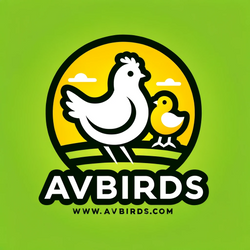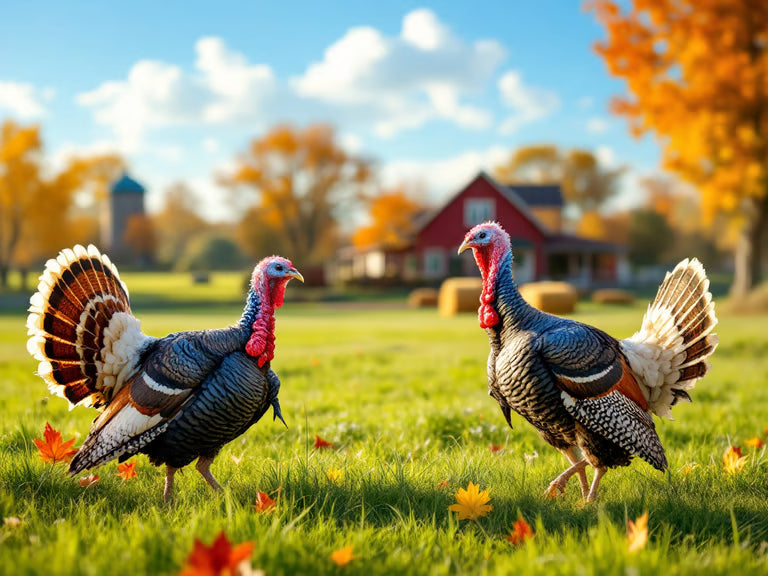Plan Your Turkey Timeline
Picture this: crisp autumn mornings, you peeking into the coop to check on fluffy poults. If you’re thinking about raising live turkeys for Thanksgiving, you’re in the right place. In this friendly guide, you’ll learn how to go from day-old birds to golden holiday centerpiece—right here in California.
Let’s walk through your calendar. Most commercial turkeys reach market weight in about 18 weeks, while heritage breeds need closer to 28 weeks (The Regulatory Review). That means you’ll want to order poults in late May or early June if you’re aiming for a heritage bird, or July for a faster-growing commercial variety.
| Stage | Age Range | Key Tasks |
|---|---|---|
| Brooding | 0–8 weeks | Provide heat, starter feed, one sq ft per poult (Freedom Ranger Hatchery). |
| Grower | 8–16 weeks | Transition to grower feed, increase space to 4 sq ft per bird. |
| Finisher | 16 weeks+ | Adjust diet for final weight, prepare for processing. |
Choose The Right Breed
Picking your turkey’s family line is your first big decision. Commercial birds bulk up fast, hitting 20 pounds by week 18, but they can face leg and heart issues (The Regulatory Review). Heritage breeds take longer, about 28 weeks, but they’re heartier outdoors and boast richer flavor.
- Commercial Breeds: Fast to market, less expensive feed-to-meat ratio, recommended if you’re tight on time.
- Heritage Breeds: Slower growth, outdoor-ready, robust flavor, perfect if you want a small flock that roams freely.
Compare more options in our live turkey breeds for thanksgiving.
Set Up Proper Housing
Your turkeys need shelter that grows with them. Start with a brooder—a heated box with pine shavings and a heat lamp. Plan on one square foot per poult for the first month, then expand.
Brooder Basics
- Heat: 95°F (35°C) under the lamp, drop 5°F each week until ambient temperature.
- Bedding: Large wood shavings to absorb moisture and limit dust (Freedom Ranger Hatchery).
- Space: One sq ft per poult, add two sq ft each month.
Adult Enclosure
Once flight feathers emerge, move birds to a coop or pen with proper ventilation and predator protection. Free-range flocks need up to 100 sq ft per bird, while confined setups require 3–4 sq ft per turkey (Freedom Ranger Hatchery).
For detailed plans, check our live turkey housing requirements.
Feed For Healthy Growth
Feeding turkeys is a bit like mixing a perfect cocktail—get the balance wrong and things get messy. Turkey poults need a starter feed with at least 28% protein until week 8, then a 20% grower formula until market weight (Michigan State University Extension).
- Starter Feed (0–8 weeks): 28% protein, free choice.
- Grower Feed (8–16 weeks): 20% protein, adjust based on weight gain.
- Finisher Feed (16+ weeks): Lower protein, higher energy to round out weight.
Turkeys drink roughly twice as much water as feed, so check your waterers daily (The Poultry Site). Follow our live turkey feeding guide for ration charts and best practices.
Ensure Turkey Health
Healthy turkeys mean a smoother ride from coop to carving station. Keep an eye out for common issues:
- Blackhead Disease: Carried by caecal worms, avoid housing turkeys near chickens to prevent infection (St David’s Poultry Team).
- Coccidiosis: Single-celled parasites cause weight loss. Clean pens regularly and consider anticoccidial agents like Amprolium.
- Mycoplasma Infection: Leads to swollen joints and respiratory issues. Diagnose with PCR tests, treat with antibiotics if needed.
- Haemorrhagic Enteritis: Adenovirus in young turkeys (6–12 weeks), watch for bloody diarrhea and secondary infections.
For more prevention tips, visit our live turkey health tips for thanksgiving.
Navigate California Regulations
California has rules on raising and transporting live poultry. Before ordering birds, check county departments for permit requirements and biosecurity measures.
- Permits: Many counties require a live bird permit—see live turkey permits for thanksgiving.
- Zoning: Backyard flocks may be limited by local ordinances—review live turkey regulations in california.
- Biosecurity: Footbaths, clean equipment, and restricted visitor access help keep flocks disease-free.
Find Local Suppliers
Sourcing healthy poults close to home saves stress and shipping costs. Options include:
- Hatcheries: Order day-old poults online, then pick up locally. Try avbirds for turkey poults and hatching eggs.
- Farms: Visit a live turkey farm in california to select your birds in person.
- Markets and Co-ops: Search buying live turkeys near me for neighborhood options.
Compare availability and cost in our live turkey availability in california and live turkey prices for thanksgiving guides.
Prepare For Thanksgiving
As holidays approach, you’ll switch gears from growth to gourmet. Handling, processing, and cooking need careful planning.
Handling And Processing
- Pre-harvest Feed Withdrawal: Stop feed 12 hours before processing to clear the gut.
- Humane Slaughter: Follow guidelines in our live turkey slaughtering process for calm birds and food safety.
- Cleaning: Chill carcasses promptly and store below 40°F.
Cooking And Carving
- Brining: Soak in salt-water mix 12–24 hours—see live turkey brining methods for thanksgiving.
- Roasting: Aim for 325°F oven temperature and internal thigh temp of 165°F. Our live turkey roasting techniques cover seasoning, foil tricks, and timing.
- Carving: Let the bird rest 20 minutes, then follow our live turkey carving tutorial for thanksgiving for neat slices.
Repurpose leftovers with creative ideas in live turkey leftovers recipes for thanksgiving.
Key Takeaways
- Order poults in late spring, plan 18–28 weeks to maturity.
- Choose breeds based on flavor, space, and growth rate.
- Provide proper brooder heat, adult ventilation, and predator-proof fencing.
- Match feed formulations to each growth stage and keep waterers full.
- Monitor for common diseases and follow biosecurity best practices.
- Check local permitting and zoning before you buy your flock.
- Source birds locally or via trusted hatcheries like avbirds.com.
- Nail your harvest day with humane processing and proven roasting methods.
Now you’ve got the roadmap, all that’s left is to grab your poults and get started. Have questions or tips from your own turkey-raising adventures? Drop a comment below so fellow California turkey keepers can benefit too.

